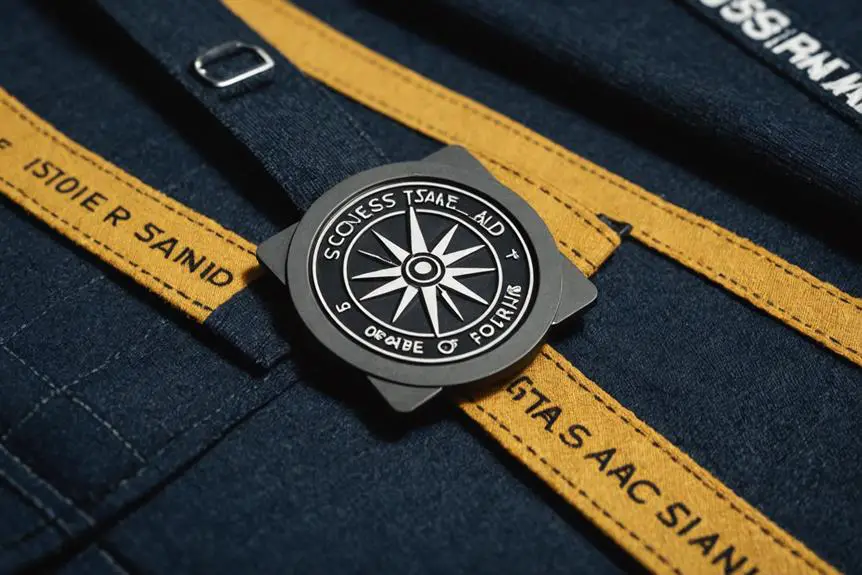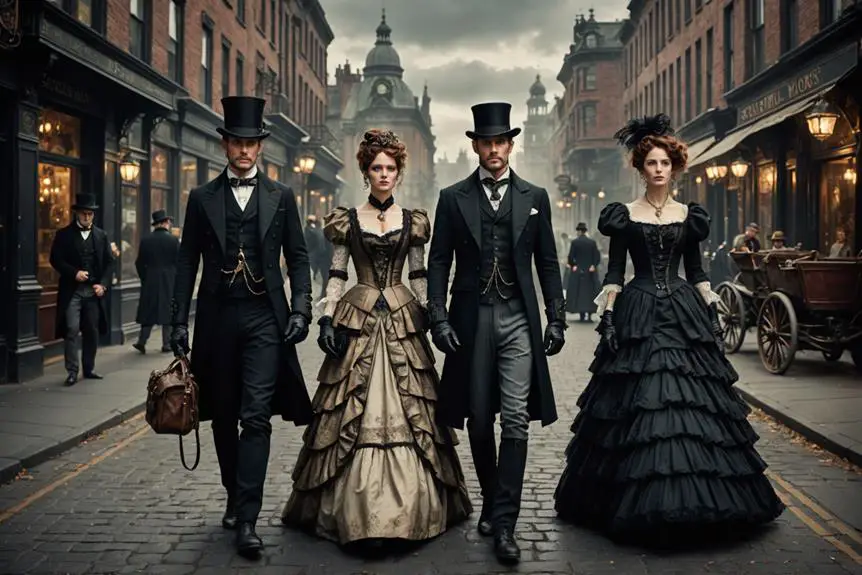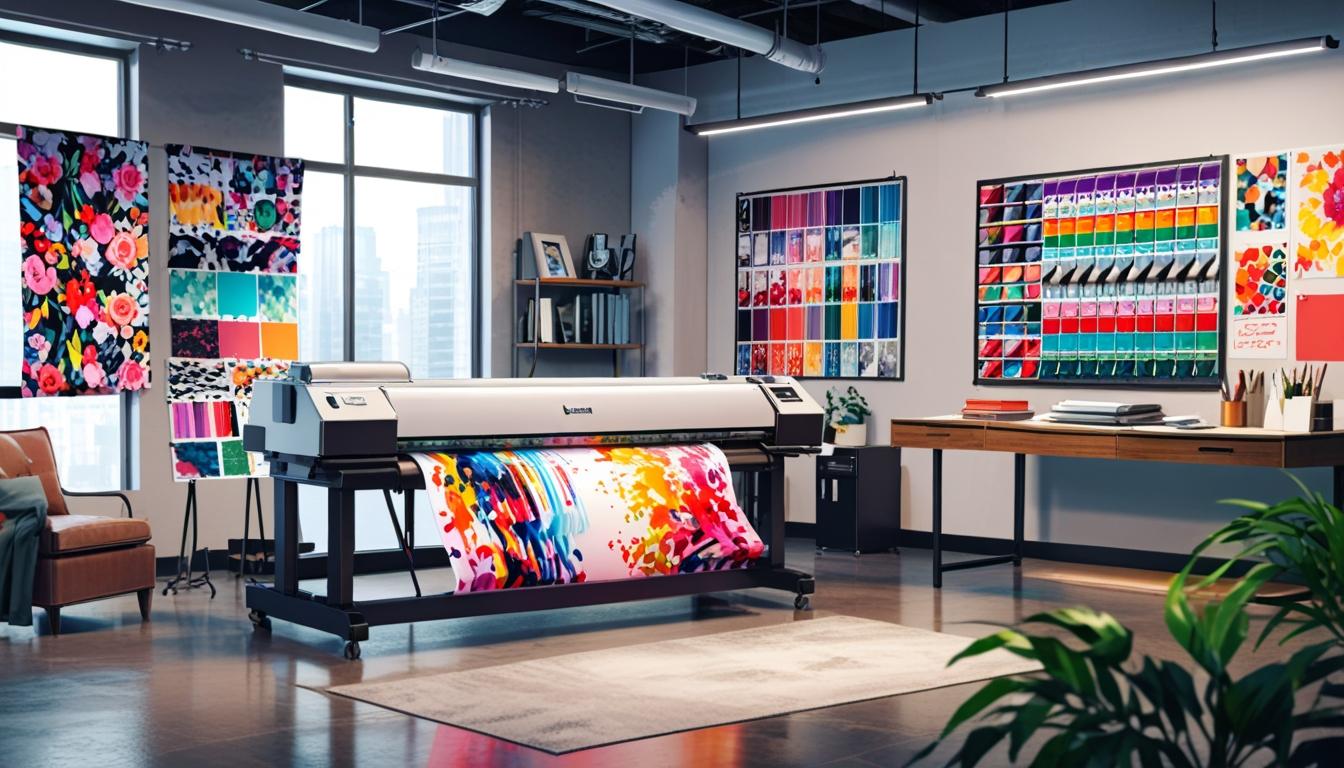Have you ever wondered if Moncler truly owns Stone Island, or is there more to the story? Since its founding in 1982, the brand has undergone several ownership changes, culminating in Moncler's significant acquisition in 2020 for €1.15 billion. This move not only reshaped the company's identity but also sparked discussions about the impact on its creative direction and cultural significance. What does this mean for the brand's future and its loyal following?
Brand History
Founded in 1982 in Ravarino, Italy, Stone Island emerged from the creative vision of Massimo Osti and Carlo Rivetti, who drew inspiration from military uniforms and innovative fabric treatments. Isn't it cool how a brand can start with such a unique background? Right from the get-go, they were all about blending functionality with style.
In 1983, GFT saw the potential in Stone Island and snagged a partial ownership. By 1991, GFT had full ownership, and Carlo Rivetti's family took the reins, ensuring the brand stayed true to its roots. When Paul Harvey stepped in as head designer from 1996 to 2008, he kept that spirit alive, driving technical innovation and keeping the brand fresh.
Fast forward to 2017, and you'll see how serious Stone Island was about securing its future. Temasek Holdings jumped on board, acquiring a 30% stake for a whopping €345 million! Talk about a confidence boost, right? But the biggest moment came in 2020 when Moncler swooped in and took a majority stake for €1.15 billion. That was a game-changer, making Stone Island a big player in the fashion world.
Ownership Timeline
From its inception, Stone Island has seen a dynamic ownership journey that reflects its growth and evolution in the fashion industry. Founded in 1982 by Massimo Osti, the brand quickly caught the eye of GFT, which acquired a 50% stake in 1983. Fast forward to 1991, and GFT gained full ownership, solidifying its place in the fashion world.
Here's a quick timeline to keep you in the loop:
- 1982: Stone Island is born.
- 1983: GFT snags a 50% stake in the brand.
- 1991: GFT takes full ownership.
- 2017: Temasek Holdings acquires a 30% stake for €345 million.
But wait, the story doesn't end there! In 2020, Moncler swoops in and acquires a majority stake in Stone Island for a whopping €1.15 billion. This was a game-changer, connecting Stone Island with a luxury fashion powerhouse. Before Moncler's big move, Carlo Rivetti's family company had maintained ownership, showcasing a long-standing bond with the brand that fans truly admire.
This ownership timeline shows how Stone Island has evolved, with each shift marking a new chapter in its story. It's fascinating to see how the brand has grown, don't you think? Who knows what exciting developments are on the horizon for Stone Island now that it's part of the Moncler family!
Cultural Impact
Stone Island has carved out a significant cultural impact since its inception, particularly within British football culture in the 1980s. Back then, fans were on the lookout for high-end sportswear that screamed status. And what did they find? Stone Island! This brand became a symbol for casual fans who wanted to stand out during match days. However, its connection to football hooliganism led to some venues banning its clothing. Who knew a jacket could cause such a stir? Remarkably, the evolution of streetwear brands, like O'Neill, also reflects similar cultural shifts in fashion and identity through the years, particularly with its vintage tag identification resources that help enthusiasts understand brand history.
The brand's cultural significance didn't stop there. It popped up in films like *The Football Factory* and *Green Street*, really tying it to the football subculture. Fast forward to the early 2000s, and you'll see Stone Island making waves in UK grime music and even in hip-hop culture in North America. Talk about versatility!
What's even cooler? Stone Island shifted from being just a subcultural brand to a recognized global fashion icon. Collaborations with celebrities and streetwear brands, like the epic partnership with Supreme in 2014, helped catapult its image. So, whether you're rocking it at a match or strutting through the city, you're not just wearing a jacket; you're wearing a piece of history.
Isn't it amazing how a piece of clothing can tell such a rich story? Stone Island isn't just a brand; it's a cultural phenomenon that continues to evolve and inspire!
Business Strategy
When you think about Stone Island's business strategy, it's clear that the brand has smartly positioned itself within the luxury fashion market. Since being majority-owned by Moncler, which snagged a controlling stake in 2020, Stone Island has really upped its game. That €1.15 billion investment wasn't just for show; it's helped enhance their market position considerably.
One of the coolest things about Stone Island is their direct-to-consumer strategy. In FY 2023, this accounted for a whopping 42% of their total revenues! That shows they're serious about building strong customer relationships. Here's a quick look at some highlights of their strategy:
- Innovation in materials: They focus on creating functional garments with cutting-edge designs.
- Internal product development: They keep the entire development cycle in-house, ensuring quality control.
- Growing retail presence: By the end of 2023, they had 81 mono-brand stores worldwide! How's that for visibility?
- Solid revenue growth: With revenues hitting €411,058 in FY 2023, they're on an upward trend.
With DTC sales growing by 16% to €172,844, it's clear that Stone Island is not just about looking good; they're about making smart moves in the fashion world. So, whether you're a die-hard fan or just curious, it's exciting to see how they'll continue to innovate and grow!
Brand Philosophy
Often celebrated for its distinctive approach, Stone Island's brand philosophy revolves around the concept of "LIFE," which highlights a commitment to quality, innovation, and cultural relevance. You see, it's not just about looking good; it's about feeling good in what you wear. Stone Island believes in creating garments that stand the test of time, both in style and in durability.
Sustainability plays a huge role in their production process. They're dedicated to responsible fashion, which means you can rock their styles without worrying about your impact on the planet. Isn't that invigorating? Plus, they dive deep into garment innovation, continuously researching new fabrics and materials. This means you get functional pieces that aren't just pretty but also practical.
But wait, there's more! Stone Island really gets into the nitty-gritty of identity and community through its designs. They want you to feel a sense of belonging when you wear their clothes. It's like you're part of something bigger! Their brand narrative evolves, making sure they stay relevant in today's ever-changing cultural landscape.
Frequently Asked Questions
Who Is Stone Island Owned By?
When you explore the fabric of the fashion world, you'll find Stone Island woven into its vibrant history. Today, Moncler holds the threads, guiding its innovative design philosophy and sustainable practices amidst evolving market trends and cultural impact.
Why Did Moncler Buy Stone Island?
Moncler bought Stone Island to enhance its strategy in the luxury market. By leveraging brand synergy, they aimed to capitalize on retail trends and evolving consumer behavior, ensuring their fashion acquisitions align with high-end streetwear demand.
How Much Is the Company Stone Island Worth?
Imagine a luxury apparel giant, weaving through fashion trends. Stone Island's brand valuation soared to €1.15 billion, reflecting its strong investment potential. Market analysis reveals diverse consumer demographics driving its impressive financial performance and market presence.
Is Stone Island Made in Italy?
Yes, you'll find Stone Island garments embody Italian craftsmanship. Their commitment to luxury streetwear shines through innovative fabric techniques, reflecting brand heritage and a design philosophy rooted in high-quality Italian manufacturing. You're wearing a piece of art.




